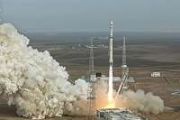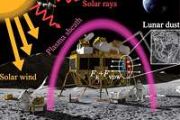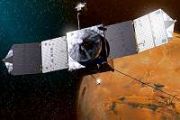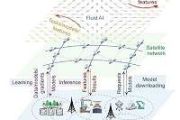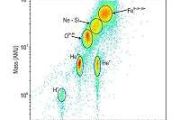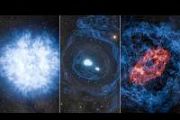Displaying items by tag: European Space Agency
ESA - EAC (European Space Agency)
The European Astronaut Centre(EAC) is a centre of the European Space Agency and home of the European Astronaut Corps. It is located inCologne, Germany, and is sub-divided in to four separate arms, these being Training, Medicine, Education and PR, and Astronaut Management. It provides training facilities to the European astronauts, particularly regarding ESA hardware for the ISS such as Columbus and the ATV. The overall European Astronaut Centre organisation is also in charge of the organisation of the training of European astronauts in the centers of other partners, such as the United States (Johnson Space Center), Russia (Star City), Canada (Saint-Hubert) or Japan (Tsukuba).
The Medical Operations arm (the Crew Medical Support Office) concentrates on providing health related support to the European astronauts and their families. Astronaut management supports and directs the careers and mission placements of the astronauts, and Education and PR are involved in activities related to education and outreach and the appropriate representation of the European astronauts and their space activities to the public.
ESA - ESAC (European Space Agency)
The European Space Astronomy Centre (ESAC) is the ESA's centre for space science, which means Astronomy as well as Solar System exploration. It is located in Villanueva de la Cañada, close to Madrid in Spain and hosts the science operation centres for all ESA astronomy and planetary missions together with their scientific archives.
Space telescopes are humankind’s eyes in the heavens: from their superior observing positions high above the Earth’s atmosphere, they provide us with astounding views of the Universe. ESAC is where those views are first studied – data on black holes and distant galaxies, from neighbouring planets and even from planets far beyond the Solar System are beamed back to the Madrid countryside. ESAC is thereby the ‘home’ of ESA’s space-telescope and planetary missions, the place from where their science operations are conducted, and where all of the scientific data that they produce are archived and made accessible to the world. ESAC is therefore one of ESA’s centres of excellence for space science. Missions represented a ESAC include (in alphabetical order) AKARI, Gaia, Herschel, INTEGRAL, LISA Pathfinder, Mars Express, Planck, Rosetta, Venus Express, and XMM-Newton.
In addition to deep space and solar system exploration ESAC hosts the data processing of SMOS, a satellite observing the earth, as well as the Space Situation Awareness (SSA) programm.
ESA’s deep-space antenna in Europe, located in Cebreros, Avila, is an essential support to the activities of ESAC. Inaugurated in September 2005, Cebreros features a new, highly accurate pointing control system and a 35-metre antenna that allow ESA to gather data from distant missions to Mercury, Venus, Mars and beyond.
ESAC is also involved in ESA missions conducted in collaboration with other space agencies. One example is Akari, a Japanese-led mission to carry out an infrared sky survey, launched on 21 February 2006. Future collaborative programmes also include the NASA-led James Webb Space Telescope, the successor to the Hubble Space Telescope.
In addition, ESAC also hosts the Spanish Laboratory for Space Astrophysics and Fundamental Physics (LAEFF), an innovative research facility aimed mainly at encouraging young Spanish scientists to enter the fields of astrophysics and fundamental physics.
The ESAC centre in Villafranca del Castillo, within the town limits of Villanueva de la Cañada, is located 30 km west of Madrid in the Guadarrama Valley. Evergreen oaks and the ruins of a nearby 15th century castle make a spectacular backdrop for the high-tech vista of ESA's large antennas and modern buildings. The Cebreros site is in Avila, about 90 km from Madrid and 65 km from ESAC.
ESA - ESRIN (European Space Agency)
The ESA Centre for Earth Observation (also known as ESRIN) located in Frascati, Italy, is one of the five specialised centres of the European Space Agency (ESA) located across Europe.
Located in Frascati, a small town 20 km south of Rome in Italy, ESRIN was established in 1966 and first began acquiring data from environmental satellites in the 1970s.
Earth observation: Earth Observation data has grown in importance as more and more international and national agencies recognise the many uses to which it can be put. Satellites for Earth observation keep a constant watch over the Earth and the data they provide help to safeguard the planet in which we live. Since 2004, ESRIN has been the headquarters for ESA's Earth Observation activities.
A multi-faceted centre: A number of other activities are also carried out at ESRIN, each of which is making an important contribution to ESA’s work. Among other things the establishment hosts the ESA development team for the Vega Launcher.
ESA - ESOC (European Space Agency)
ESOC is the European Space Operations Centre, one of the centres of the European Space Agency (ESA).
Since its creation in 1967, the European Space Operations Centre (ESOC) in Darmstadt, Germany, has planned missions, operated more than 60 satellites and ensured that spacecraft meet their mission objectives. The mandate of ESOC is to conduct mission operations for ESA satellites and to establish, operate and maintain the necessary ground segment infrastructure.
ESA - ESTEC (European Space Agency)
The European Space Research and Technology Centre (ESTEC) is the European Space Agency's main technology development and test centre for spacecraft and space technology. It is situated in Noordwijk, South Holland, in the Netherlands.
At ESTEC, about 2500 engineers, technicians and scientists work hands-on with mission design, spacecraft and space technology.
ESTEC provides extensive testing facilities to verify the proper operation of spacecraft, such as the Large Space Simulator (LSS), acoustic and electromagnetic testing bays, multi-axis vibration tables and the ESA Propulsion Laboratory (EPL). Prior to the launch of almost all equipment that ESA launches is tested in some degree at ESTEC.
ESA - Headquarters (European Space Agency)
The European Space Agency (ESA), established in 1975, is an intergovernmental organisation dedicated to the exploration of space, currently with 19 member states.
Headquartered in Paris, ESA has a staff of more than 2,000 (2012).
ESA's space flight program includes human spaceflight, mainly through the participation in the International Space Station program, the launch and operations of unmanned exploration missions to other planets and the Moon, Earth observation, science, telecommunication as well as maintaining a major spaceport, the Guiana Space Centre at Kourou, French Guiana, and designing launch vehicles. The main European launch vehicle Ariane 5 is operated through Arianespace with ESA sharing in the costs of launching and further developing this launch vehicle.
ESA is managing several centres distrbuted in Europe:
- ESTEC: the ESA science missions are based at ESTEC in Noordwijk, Netherlands,
- ESRIN: the Earth Observation missions at ESRIN in Frascati, Italy,
- ESOC: the ESA Mission Control (ESOC) is in Darmstadt, Germany,
- EAC: the European Astronaut Centre (EAC) that trains astronauts for future missions is situated in Cologne, Germany,
- ESAC: and the European Space Astronomy Centre (ESAC) is located in Villanueva de la Cañada, Spain.










